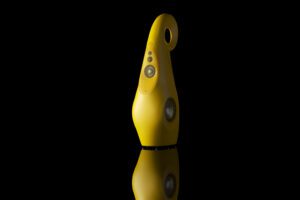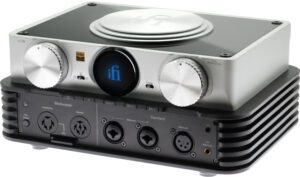
Trying to predict the future is impossible. The lack of lottery wins, flying cars, or dystopian post-apocalyptic hellscapes is a bit of a giveaway. But, when it comes to audio, predicting the near future is possible, and a big chunk of tomorrow’s audio is likely Lindemann Musicbook Combo shaped!
The Musicbook Combo addresses a gap in modern audio; the small, high-performance integrated amplifier with a good audio streamer. The audio world needs a small box to sit on a bookshelf rather than a dedicated stand. It also requires a product that’s easy to install and operate. And it needs to sound good. The Lindemann Musicbook Combo does all those things.
Does it all
Lindemann’s elegant little box is a deceptively powerful and flexible device. Delivering a healthy 70W into eight ohms, the amp includes a network player, DAC, MM phono stage, and two line-level analogue inputs. You can connect it to A2DP-compatible Bluetooth devices, local networks, and online streaming services via a router. You can play thumb drives or CDs from a CD-ROM drive inserted into the rear USB connector. There’s a good-quality headphone socket.
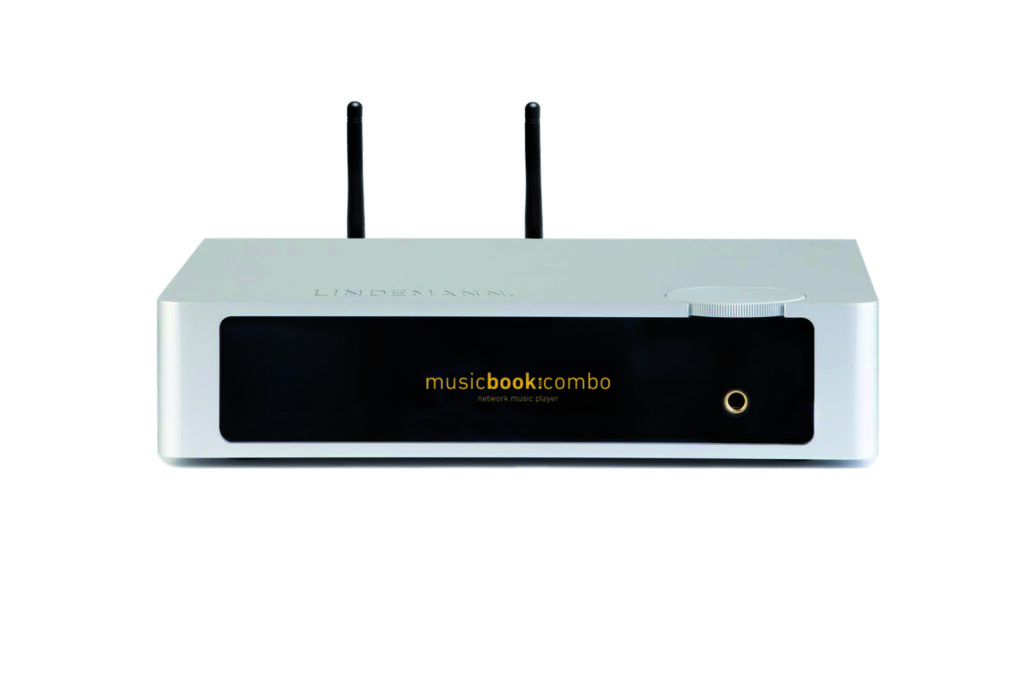
Everything is driven from Lindemann’s iOS or Android app, and there’s a healthily sized yellow OLED read-out on the front panel. The amp’s control is minimal, just a power button and a jog wheel, but this last double up as volume and source selector. There is also a mini-remote with track-handling functionality, but consider this an adjunct to the app.
Once you go deeper, you begin to see why the Musicbook Combo is so powerful. First, it upconverts any PCM signal to DSD as standard (using an AK4137 upsampler), but this can be deactivated, and any PCM signals are kept bit-perfect to the twin AK4493 DACs and synchronised against an ultraprecise MEMS-Femtoclock. It can be run wired or wirelessly (within 10m from a wireless router) into your Local Area Network. It’s entirely Roon Ready and works with Tidal Connect, Qobuz, High Res Audio.com, Spotify Connect, Deezer and more. If you like the pitter-patter of tiny Lindemanns around the house, there is also a multi-room feature.
Appiness is a warm iPad
While it’s notionally possible to operate the Musicbook Combo without a smartphone or tablet, it is like asking a ballet dancer to dance Swan Lake in leg irons. The absolute joy of the Lindemann design and why it justifies that ‘it’s the future’ epithet is how well it works with its app (and apps like Roon). This is something we occasionally struggle to reconcile; a product like the Musicbook Combo must live in that app-based ecosystem today.
Sadly, too many audio companies seem to be more about ‘pivoting’ toward the place Lindemann already occupies. The industry is perhaps universally guilty of being behind the curve here; we, as audio writers, are more wrapped up in the hardware than in the interaction between that hardware and the app. In the real world, people care more about how that app works and how the product interacts with the app. In our defence, the app is often still a work in progress when the product gets into our hands, but again in the real world, such a halfway house is indefensible. Rant mode: disengaged.
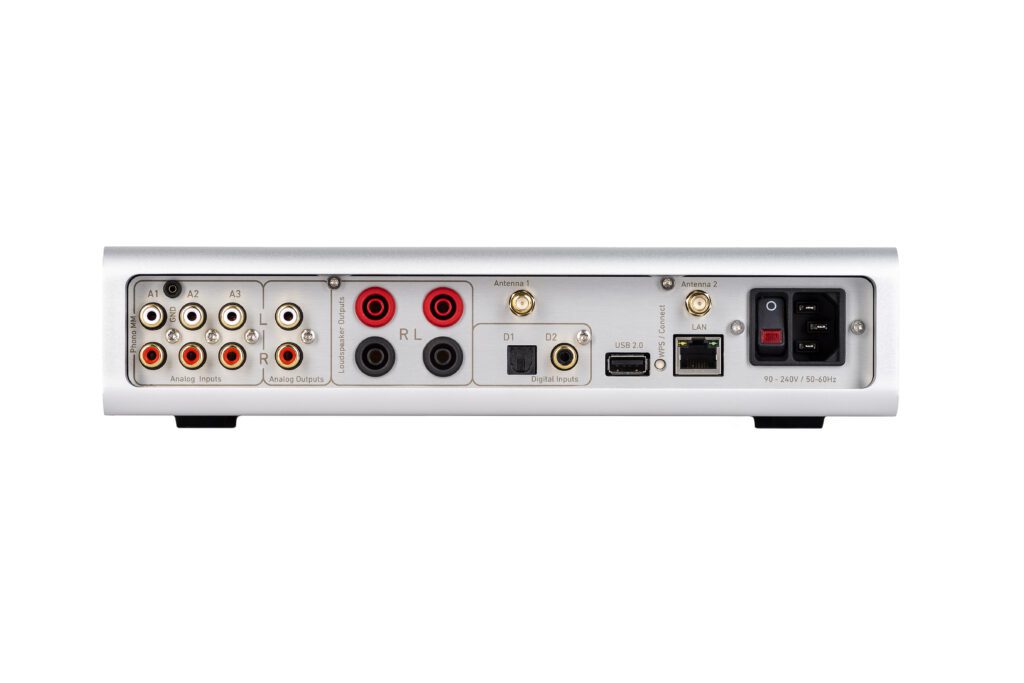
Fortunately, the Lindemann app is a joy to use. It’s just the right balance of ‘informative’ without being ‘busy’, and it responds quickly. Once set up (no big deal), the Combo also handshakes with other apps like Tidal or Roon, meaning they do all the heavy lifting, and the Combo reacts appropriately. I’d put this on a par with the better company-made apps out there; it’s not as intuitive as Sonos (few are), but it’s certainly easy to navigate and highly reactive.
Wired or wireless
I tried connecting the Lindemann Musicbook Combo in both wired and wireless LAN settings, but in fairness, my wireless router is only about 1.5m from the Combo’s twin aerials. This means I could detect no sound quality or latency differences between wired and wireless connections. If pressed, I’d opt for the wired connection, but that’s more to do with personal preference than observed differences. The Combo seems to make no distinctions either way.
Running Lindemann’s own Streaming 4.0 platform and app, the Combo worked like a charm. The app gently guides you to building playlists in a more considered way than track aggregation, but only because I found playlist creation is more in retrospect and made from the last-played option. I prefer this more reflective approach; it acts a little more like Roon. Streaming 4.0 and Roon work very nicely together, and I found myself in that Roon space a lot here.

The sound of the Combo is evident and clean, cutting a delicate balance and always staying on the right side of ‘clinical’. Perhaps most noticeable is that this ‘spring water’ sound applies universally; there’s no point where the sound warms up or blurs across the board. While that might sound like it would deter valve-amp users and their seeming love of euphony, I think they would like the clarity and focus of that Lindemann sound.
Go-to albums
My go-to albums for testing midrange clarity and bass – Stella di Napoli by Joyce DiDonato [Erato] and The Last Resort by Trentemøller [Poker Flat] – highlighted precisely what the Lindemann Musicbook Combo does so well, as they delivered all the detail and insight required to make the former album come alive and all the precision and drive needed to make the latter sound scary. But, in fairness, what the Combo did right, it did right universally.
There’s a reason we use these discs over and over. While hugely enjoyable to hear, I’m not going to extract review-grade information from a Half Man Half Biscuit album, but Achtung Bono [Probe Plus] needs something accurate to serve up the lyrics of ‘Joy Division Oven Gloves’ without it sounding too spikey and raw while retaining the wonderful belt-fed surrealist sarcasm dripping from every line. And Lindemann’s Combo makes short work of lines like ‘Nero fiddles while Gordon Burns/In his Joy Division Oven Gloves.’
Everything I played was given a fair hearing by the Lindemann Musicbook Combo, which is extremely rare at this level. The clean, precise sound makes the Lindemann so musically flexible. I went from operetta to electro to sarky post-punk from the Wirral and then to Bach inventions, back via Dylan’s Desire [Capitol], over to some classic early 1990s Acid Jazz, and so it went on.
Class act
Getting that much from a small box without it going into melt-down mode can only mean one thing – Class D power amp operation. And this will cause some audiophiles to press the ejector seat on principle. More fool them; they are missing a precise, accurate, musically focused, detailed, articulate and highly dynamic sound, especially when the target loudspeaker audience is considered.
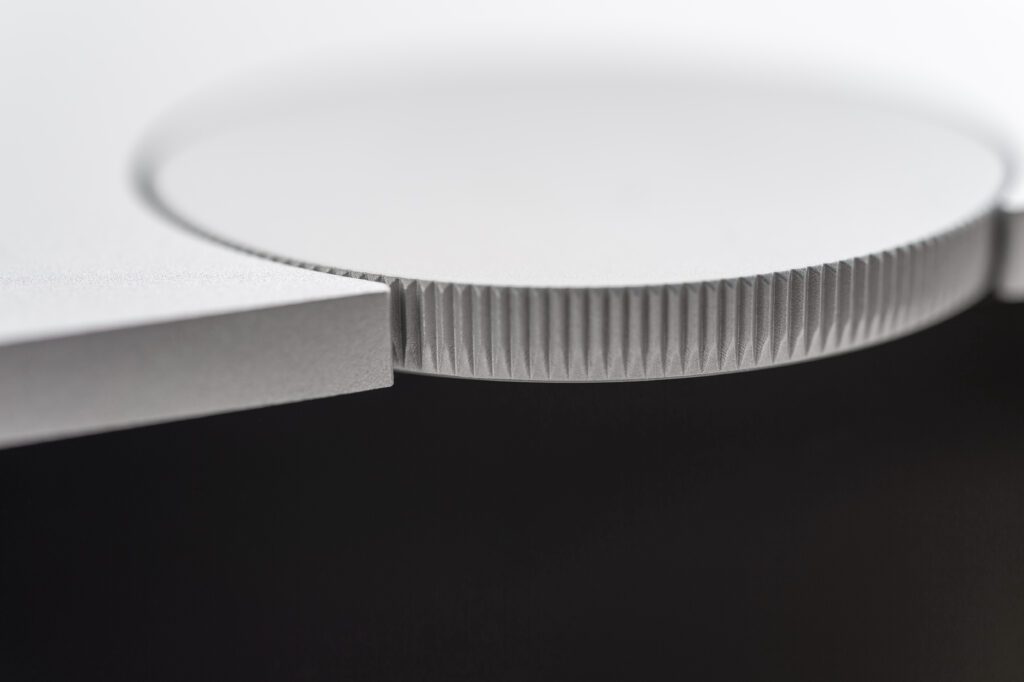
With spiralling fuel bills meaning the running costs of a pure Class A amplifier begin to get a little noticeable, the great sound and cool running Lindemann makes a robust case for itself. I feel what’s inside the box is functionally unimportant as long as it works well; how it sounds and operates matters.
Don’t diss
So, are there any downsides to the Musicbook Combo? Surprisingly few, unless you are in the habit of ‘dissing’ things for being something they weren’t intended to be. It’s not meant to drive £300,000 tower loudspeakers with an impedance plot that eats amplifiers, but I used the Combo with KEF’s LS50 Meta, and the two worked together so well, so I felt no need to look further. I want moving coil compatibility alongside moving magnet, but not if it sacrifices the performance of the MM stage as it stands. I’d also prefer if its Bluetooth connection included aptX HD (which can support up to 24bit, 48kHz PCM) alongside A2DP, but this is far from a deal-breaker. And realistically, that’s about it!
The Lindemann Musicbook Combo is one of the ways good audio reaches those it cannot. It’s small enough to be domestically acceptable. It’s powerful enough to drive the loudspeakers it will most likely partner with and sounds good. It’s made to be app-chummy and live happily in that domain, and the app works exceptionally well. If this is the face of audio’s future, it’s bright and rosy!
Technical specifications
- Type streaming integrated amplifier
- Power output 2×130W into 4Ω, 2× 70W into 8Ω
- Analogue inputs MM cartridge (RCA), two line-level (RCA)
- Analogue outputs one line-level (RCA), 6.35mm headphone jack, 2× BFA speaker terminals
- MM specifications 47kΩ, 150pF, 40dB gain
- Digital inputs Coaxial and optical S/PDIF, USB 2.0, 100Mbits/s RJ45 LAN, 2× antenna (Bluetooth, WLAN)
- Bluetooth 4.2, A2DP
- DAC resolution up to 768kHz, 32bit PCM and DSD 512
- Supported codecs WAV, FLAC, AIFF, ALAC, MP3, AAC, Ogg Vorbis, WMA, DSD
- Network UPnP and DLNA support
- Dimensions (W×H×D) 28 × 22 × 6.3cm
- Weight 3kg
- Price £4,490
Manufacturer
Lindemann Audio
UK Distributor
Signature Audio Systems
+44(0)7738 007776
By Alan Sircom
More articles from this authorRead Next From Review
See all
PrimaLuna EVO 100 phono preamplifier
- Apr 22, 2024

Reiki Audio SuperSwitch Master Pro + Servant Pro
- Mar 27, 2024

Melco Audio N1-S38 music server
- Mar 27, 2024








